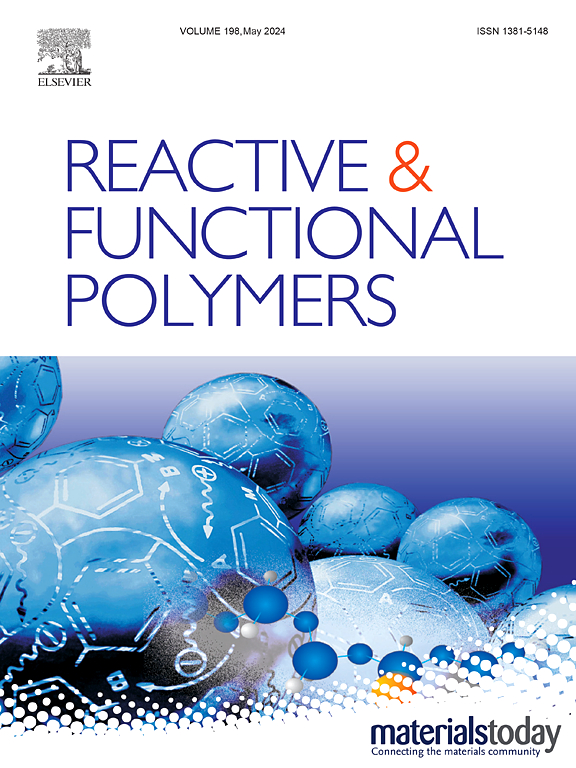Fully biobased epoxy vitrimers from phloroglucinol triglycidyl ether and 2,5-furandicarboxylic acid
IF 5.1
3区 工程技术
Q1 CHEMISTRY, APPLIED
引用次数: 0
Abstract
The use of non-renewable resources and hardly recyclable materials in the polymer industry and the related environmental concerns have led to intensive research for implementing more sustainable technologies compliant with the circular economy and green chemistry principles. Among the several possibilities, biobased vitrimeric materials to be used as an alternative to conventional thermosets represent an appealing solution. In this work, phloroglucinol triglycidyl ether was used as biobased epoxy resin in formulation with 2,5-furandicarboxylic acid. Different compositions were investigated by varying the carboxylic acid/epoxy molar ratio. The formulation with a ratio equal to 0.4 showed the best balance in terms of thermo-mechanical properties and pot life, and it was further optimized by adding a biobased reactive epoxy diluent from sorbitol at different weight percentages. The obtained crosslinked materials showed high gel content (> 99 %) and glass transition temperature in the 140–180 °C range, in line with standard oil-based epoxy systems. Due to the presence of both ester bonds and free hydroxy groups, the systems exhibited a vitrimeric response based on transesterification exchange reactions through an Arrhenius-type behavior, leading to a fast stress relaxation process. In addition, repeatable post-cure thermoformability and effective chemical recycling were demonstrated on tailored formulations based on these dynamic systems upon the incorporation of a biobased epoxy reactive diluent or an anhydride-based co-curing agent. This work provides the first example of fully biobased epoxy vitrimers based on 2,5-furandicarboxylic acid, further advancing the development of reusable and recyclable by-design biobased epoxy systems for sustainable manufacturing.

由间苯三酚三缩水甘油酯醚和2,5-呋喃二羧酸合成的全生物基环氧树脂
聚合物工业中不可再生资源和几乎不可回收材料的使用以及相关的环境问题导致了对实施符合循环经济和绿色化学原则的更可持续技术的深入研究。在几种可能性中,生物基玻璃体材料作为传统热固性材料的替代品是一种很有吸引力的解决方案。以间苯三酚三缩水甘油酯醚为生物基环氧树脂,与2,5-呋喃二羧酸合成。通过改变羧酸/环氧的摩尔比,研究了不同的组分。配比为0.4的配方在热力学性能和锅内寿命方面表现出最佳的平衡,并通过添加不同重量百分比的山梨醇生物基活性环氧稀释剂进一步优化。得到的交联材料凝胶含量高(>;99%),玻璃化转变温度在140-180°C范围内,符合标准的油基环氧树脂系统。由于酯键和游离羟基的存在,该体系通过arrhenius型行为表现出基于酯交换反应的硫酸反应,导致快速的应力松弛过程。此外,在加入生物基环氧反应性稀释剂或酸酐基共固化剂后,基于这些动态系统的定制配方证明了可重复的固化后热成型性和有效的化学回收。这项工作提供了基于2,5-呋喃二羧酸的全生物基环氧玻璃体的第一个例子,进一步推动了可重复使用和可回收的设计生物基环氧体系的发展,以实现可持续制造。
本文章由计算机程序翻译,如有差异,请以英文原文为准。
求助全文
约1分钟内获得全文
求助全文
来源期刊

Reactive & Functional Polymers
工程技术-高分子科学
CiteScore
8.90
自引率
5.90%
发文量
259
审稿时长
27 days
期刊介绍:
Reactive & Functional Polymers provides a forum to disseminate original ideas, concepts and developments in the science and technology of polymers with functional groups, which impart specific chemical reactivity or physical, chemical, structural, biological, and pharmacological functionality. The scope covers organic polymers, acting for instance as reagents, catalysts, templates, ion-exchangers, selective sorbents, chelating or antimicrobial agents, drug carriers, sensors, membranes, and hydrogels. This also includes reactive cross-linkable prepolymers and high-performance thermosetting polymers, natural or degradable polymers, conducting polymers, and porous polymers.
Original research articles must contain thorough molecular and material characterization data on synthesis of the above polymers in combination with their applications. Applications include but are not limited to catalysis, water or effluent treatment, separations and recovery, electronics and information storage, energy conversion, encapsulation, or adhesion.
 求助内容:
求助内容: 应助结果提醒方式:
应助结果提醒方式:


